2024 Chevrolet Equinox EV First Drive Review: Everyday Driving Made Better
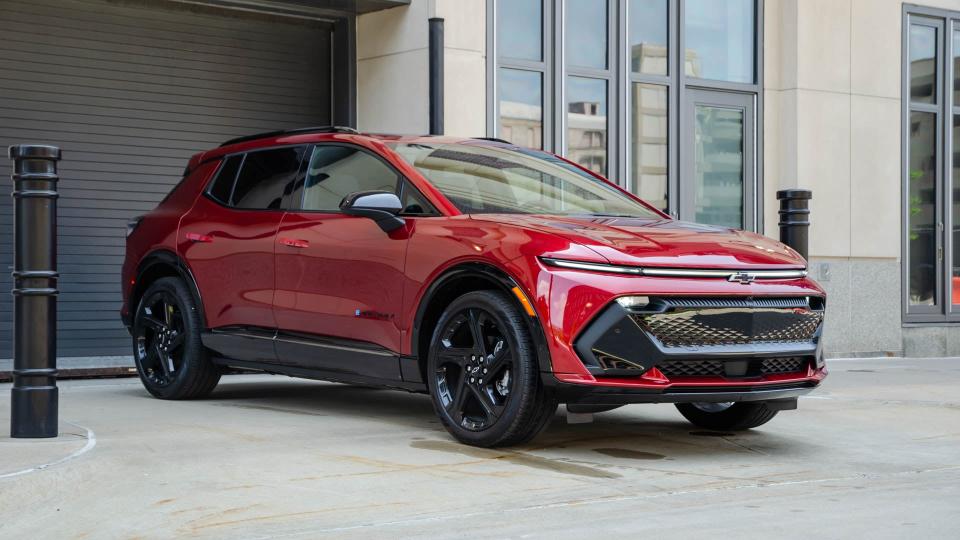
I’m now of the mind that unless an engine plays a vital part in a car’s overall experience, I’m done with internal combustion. Of course, if an engine is special and enjoyable, pump that fuel-burning goodness into my veins. But why do I need to drive yet another coarse, gravelly, underpowered four-cylinder and CVT? Give me the smooth, effortless acceleration of an electric motor instead. And that’s exactly the argument that the 2024 Chevy Equinox EV makes for itself.
Chevy is on a new kick where it wants to offer both internal combustion and fully electric versions of many of its new cars. The Silverado EV pickup is one example and the other is this new Equinox EV. The latter isn’t replacing the gas-powered version, with its anemic 1.5-liter turbo-four, but will actually be sold alongside it. So if customers like the Equinox’s basic size and packaging, they can choose their method of propulsion.
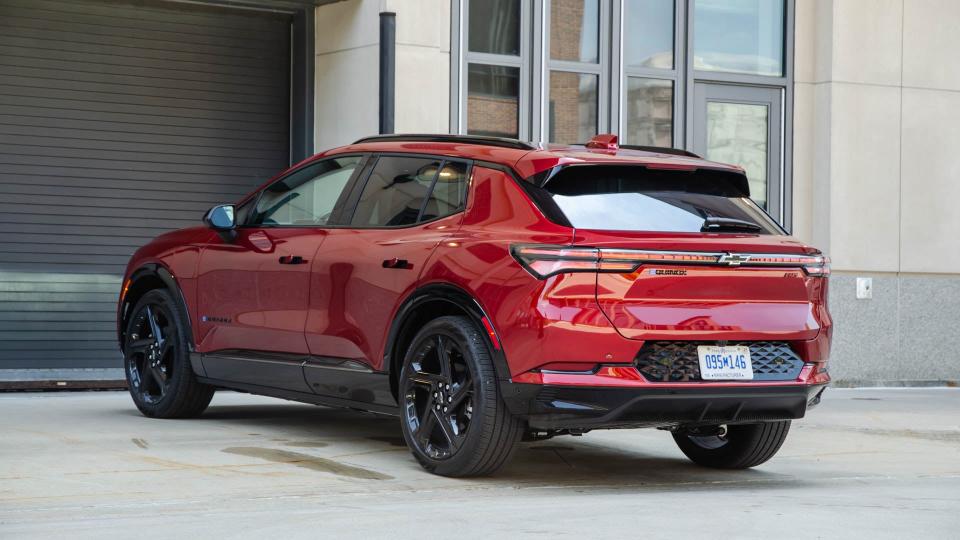
However, once customers drive the electric one, I don’t see how they can go back to the piston-powered version. The new Chevy Equinox EV is—and I think this is the first time anyone’s ever said this about an Equinox—surprisingly great.
The Basics
If you thought the Equinox EV was already out, don’t worry, so did I. But it isn’t yet, you’re thinking of the Blazer EV. Your confusion is forgiven, though, because I mixed the two up in person constantly. I even thought I was riding shotgun in an Equinox at one point, only to be told that I was actually in a Blazer. Whoops. However, that confusion is understandable given that both cars share a very similar Ultium platform and 85-kWh battery. The biggest differences between the two cars are that the Equinox is slightly smaller and not available with rear-wheel drive, only front- and all-wheel drive.
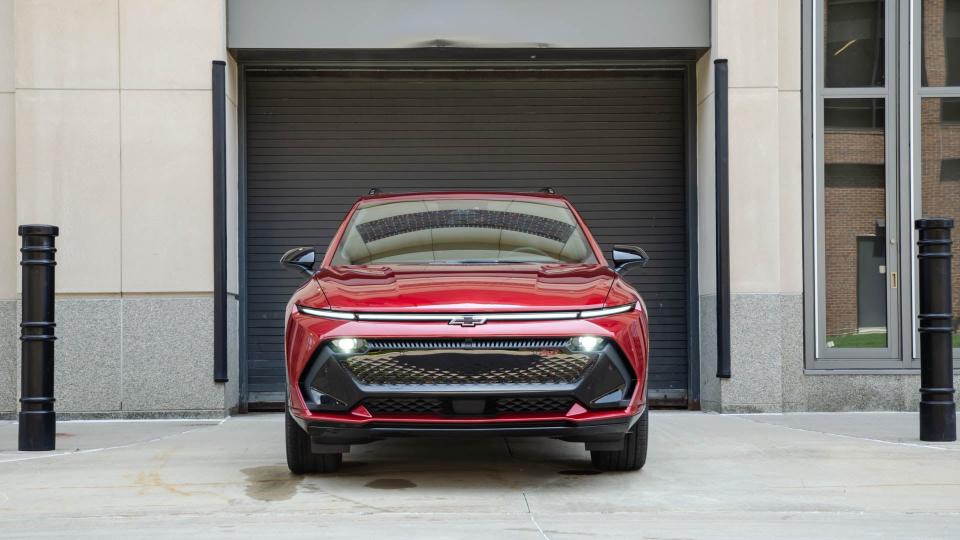
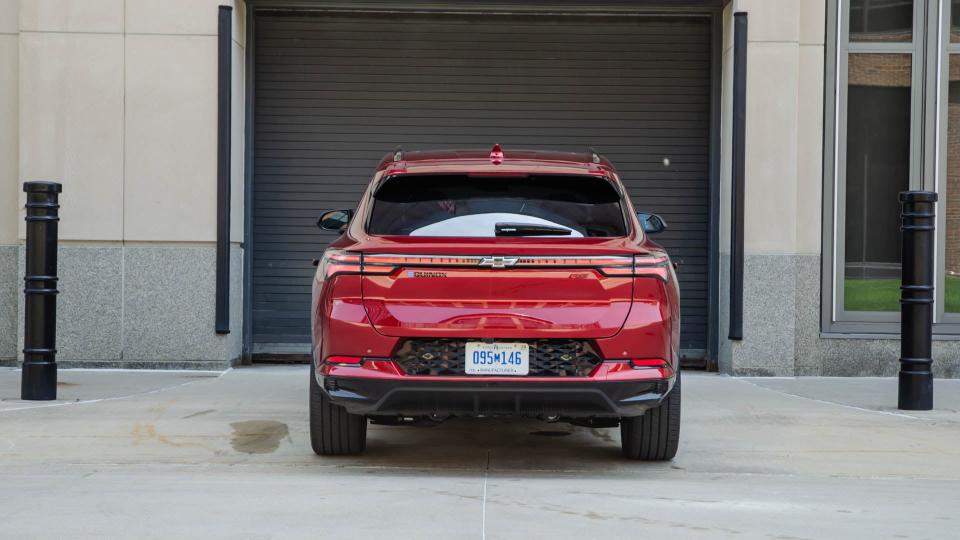
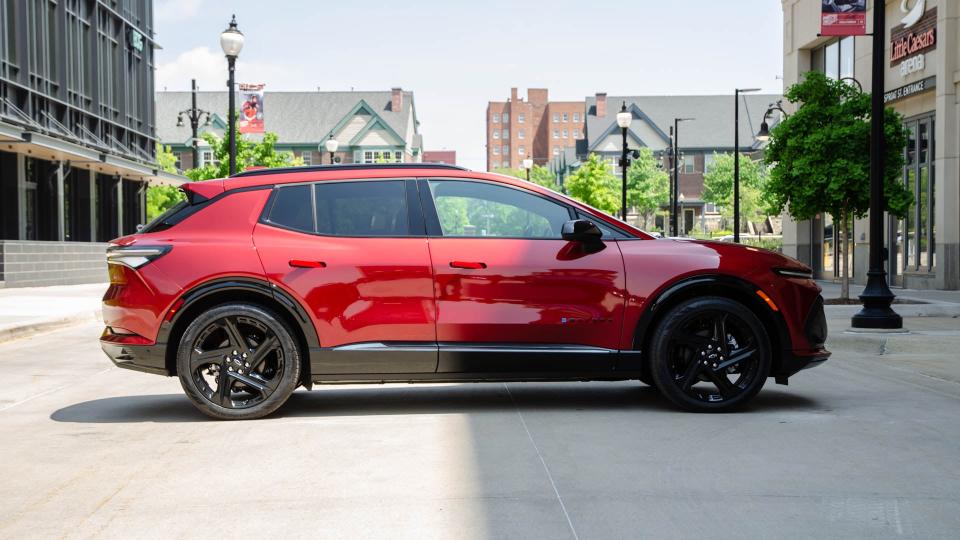
Looking at the Equinox EV, you wouldn’t immediately know that it’s electric and that’s by design. Entry-level crossover customers aren’t looking for flashy, tech-forward designs. They want something simple and handsome and the Equinox EV is just that. It won’t win any design awards but few people will look the other way in disgust. It’s fine looking and that’s exactly what it needed to be.
On the flip side, I was pleasantly surprised by its cabin. It isn’t very stylish but wow is it screwed together properly. Chevy went above and beyond with the interior materials, fitment, and finish in such an inexpensive car. It’s no Mercedes but it’s a damn fine place to spend some time, with loads of soft-touch plastics, comfy seats, and a surprising amount of rear legroom. A family of five will cruise (Cruze?) just fine. I drove the Equinox EV back-to-back with the new, nearly-$100,000 Silverado EV and the little crossover had a better interior, with nicer materials and far less noise, vibration, or harshness (NVH).
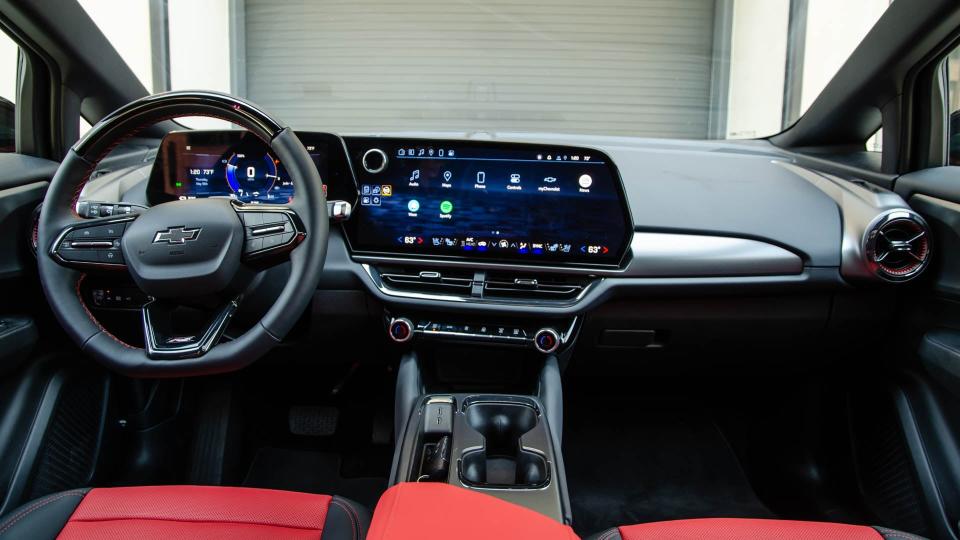
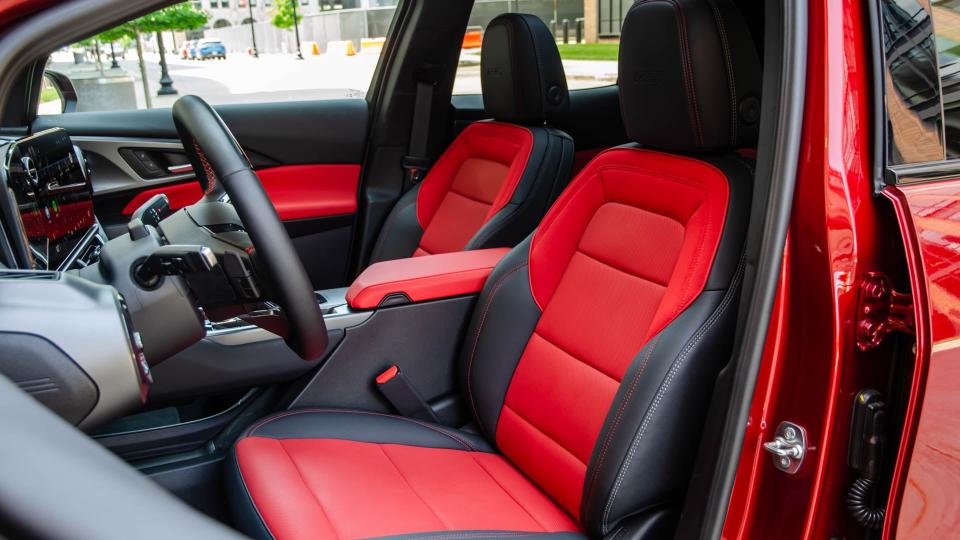
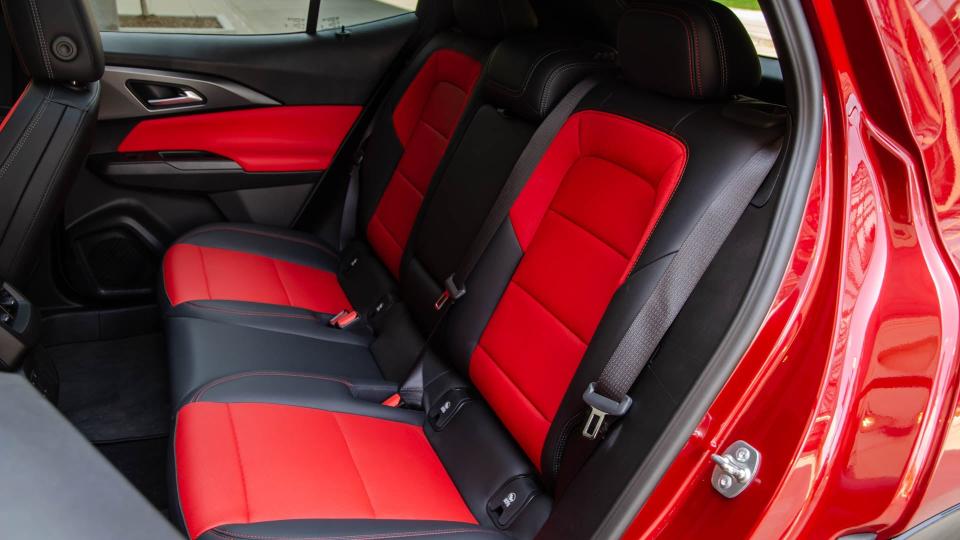
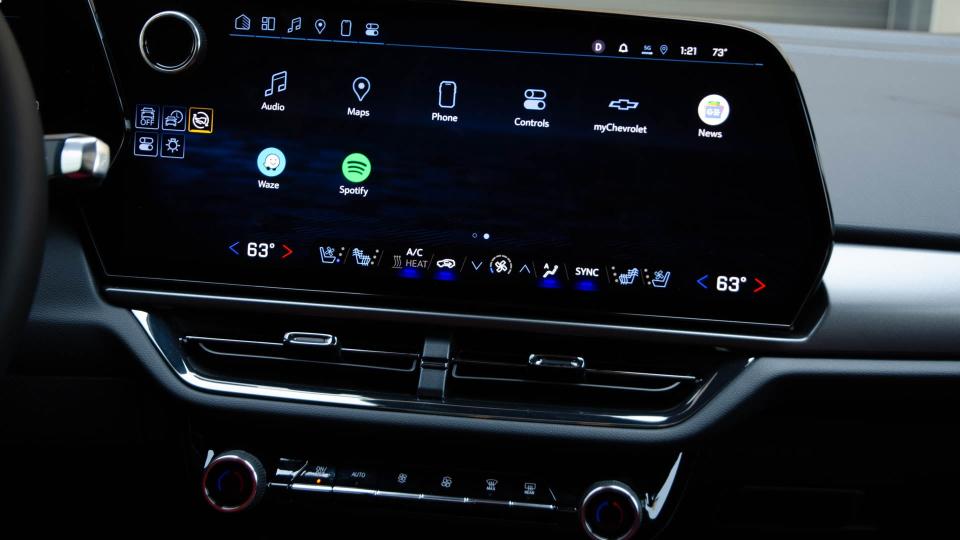
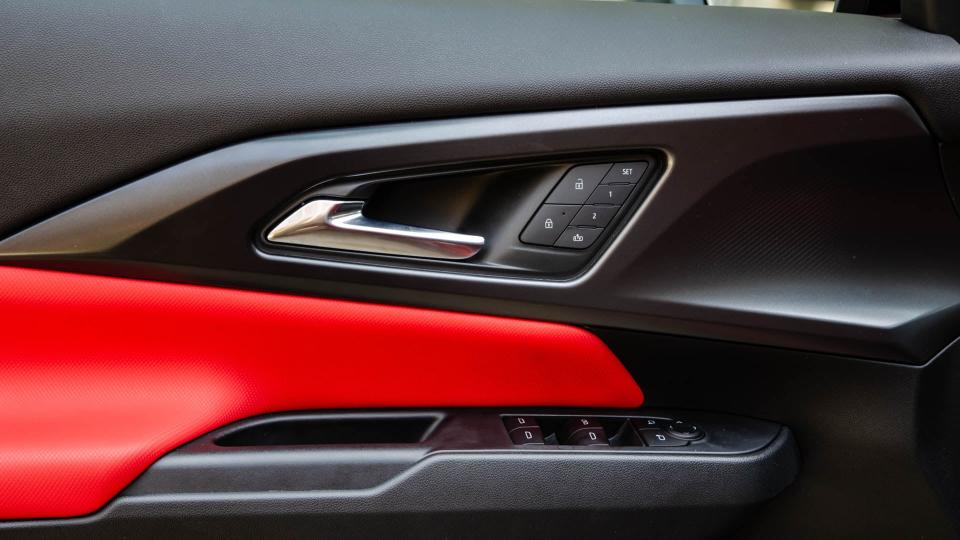
Chevy isn’t offering all-wheel drive on launch models just yet, so I was only able to test the Equinox 2RS FWD, which boasts a single motor at the front axle that makes 213 horsepower and 236 lb-ft of torque. And yet it was powerful enough that it tricked me into thinking it was the all-wheel-drive model from behind the wheel. If you do get the all-wheel-drive version, it comes with an additional rear motor which helps make a total of 288 hp and 333 lb-ft. However, I’m honestly not sure it needs the additional motor and power unless you live in a climate that demands all-wheel-drive traction. Otherwise, the single-motor car has plenty of punch, even when passing on the highway.
Driving the Chevy Equinox EV
Just a few minutes behind the wheel was enough to convince me that customers are going to love this thing. It’s absolutely everything a typical crossover customer wants: comfortable, quiet, and spacious. However, it also steers nicely, with a light weighting that builds nicely off-center. Its brakes are good, too, so much so that I never once noticed when the regenerative braking ended and the friction brakes began. I also never felt the need to turn on one-pedal driving, as the brake pedal felt perfectly judged for this sort of car. Will anyone be thrilled by the electric Equinox? Of course not, it’s never going to be mistaken for fun. But it will be a comfy, enjoyable little crossover for the masses.
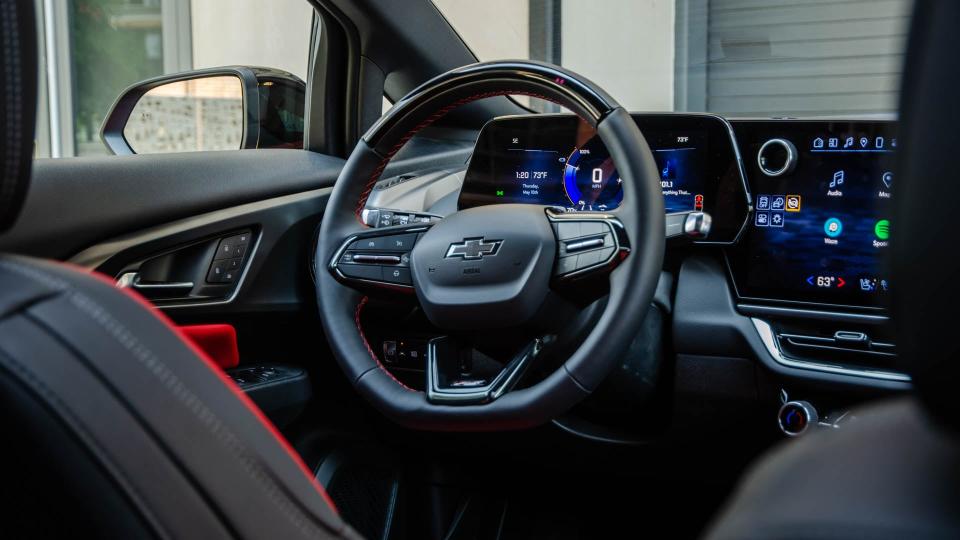
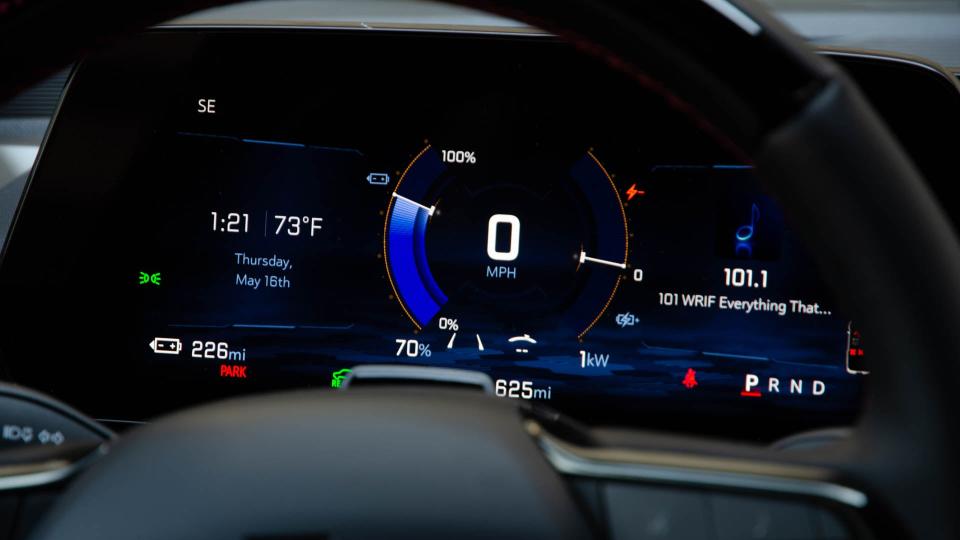
The biggest standout is actually the thing that hides in the background—its motor. That single front-mounted motor just quietly does its thing, moving the Equinox along with ease and no fuss. It doesn’t feel particularly special but, in this case, it’s addition by subtraction. Just getting rid of the gravely, underpowered four-cylinder that powers the standard Equinox is enough to make the EV version better. But replacing it with a smooth, effortless electric motor that’s all but invisible is exactly what a compact crossover needs. I love the thrill of a great V8 but I won’t miss cheap econobox four-pots when EVs take over. This is the future of normal motoring.
Customers will also love Super Cruise. On the highway, it’s remarkably good at keeping itself centered in the lane, watching for other cars around it, and even changing lanes on its own when it deems appropriate. Not every customer will use it, but it’s something that makes Chevy’s offering stand out in the segment.
The Highs and Lows
There’s a lot to like, here, which is not something I ever expected to say about any Equinox. But this electric one is smooth, comfy, and incredibly quiet. I think the most impressive part of the Equinox EV is its ride quality, though. It rounds out bumps nicely without ever feeling floaty, which isn't easy with 4,902 pounds (not counting the driver, who tipped its scale further past 5,000 pounds than he’d like to admit) to carry around.
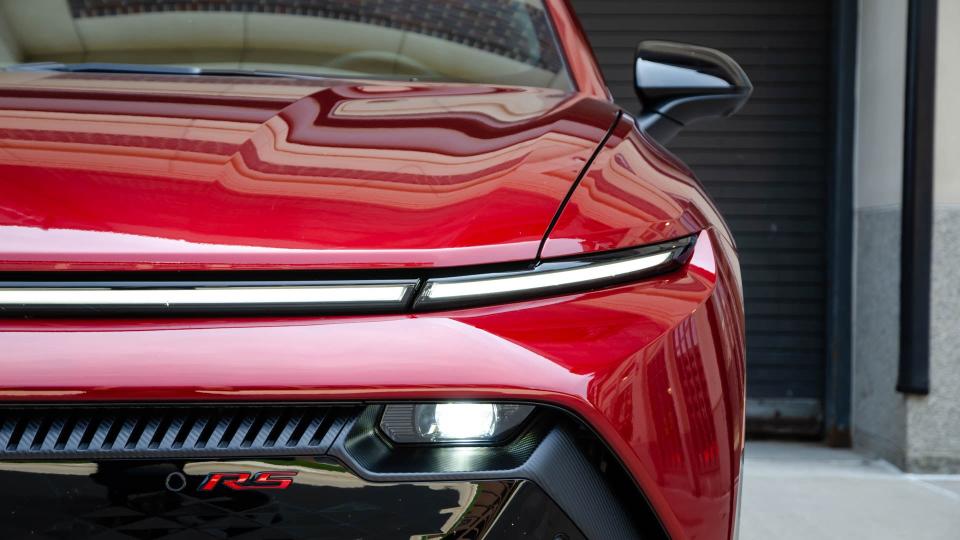
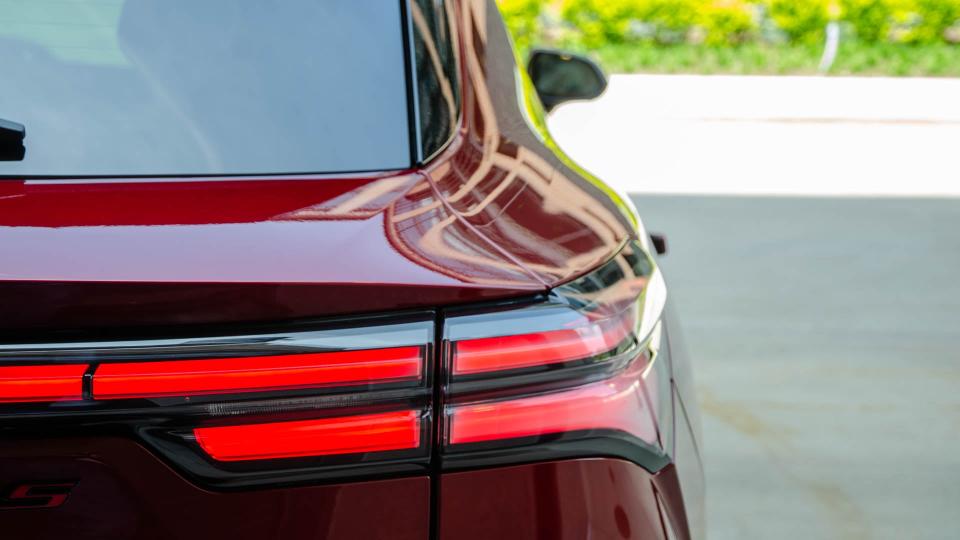
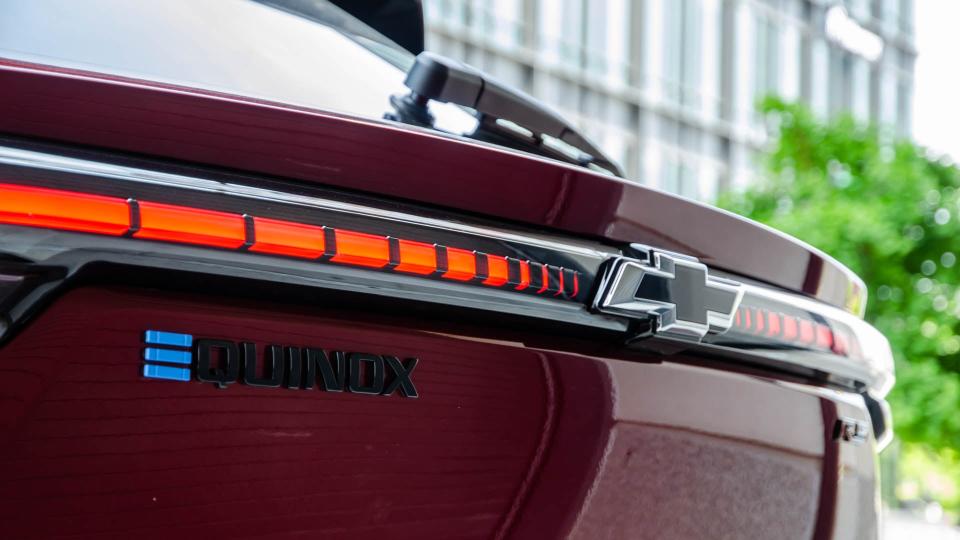

Most of my beefs with the Equinox EV are actually with GM and the Ultium platform rather than the car itself. For instance, it’s far too heavy for such a small crossover but so is every Ultium car (and most EVs, to be fair). Thankfully, it overcomes that weight with shockingly good efficiency but it’s likely going to eat through tires and brakes. Also, GM’s insistence on getting rid of start buttons in its EVs is infuriating, as it makes starting and stopping the car more confusing. If I have an Equinox EV-specific qualm, though, it’s with its design. While I appreciate Chevy going for a pretty normal design, so as to not scare off its typical customers, it’s too similar to the Blazer EV and I got the two cars confused countless times while hanging with Chevy. Surely, Chevy could have made it a little more interesting-looking.
Chevy Equinox EV Features, Options, and Competition
With a starting price of $43,295 (before any federal or state tax incentives), the Equinox EV comes pretty well-equipped right out of the box. Heated front seats, the 17.7-inch touchscreen, a surround-view camera, a power tailgate, and all of Chevy’s active safety systems are all included in the base price. You also don’t have to pay extra to get its 319-mile range, that’s standard, too.
The only cars Chevy let us test were 2RS models, which is the second-lowest trim level. Without any options, that costs $45,790 out the door but doesn’t add much value on paper. Instead, the 2RS model just looks sportier than the base 2LT model, with upgraded 21-inch black wheels and black accents.
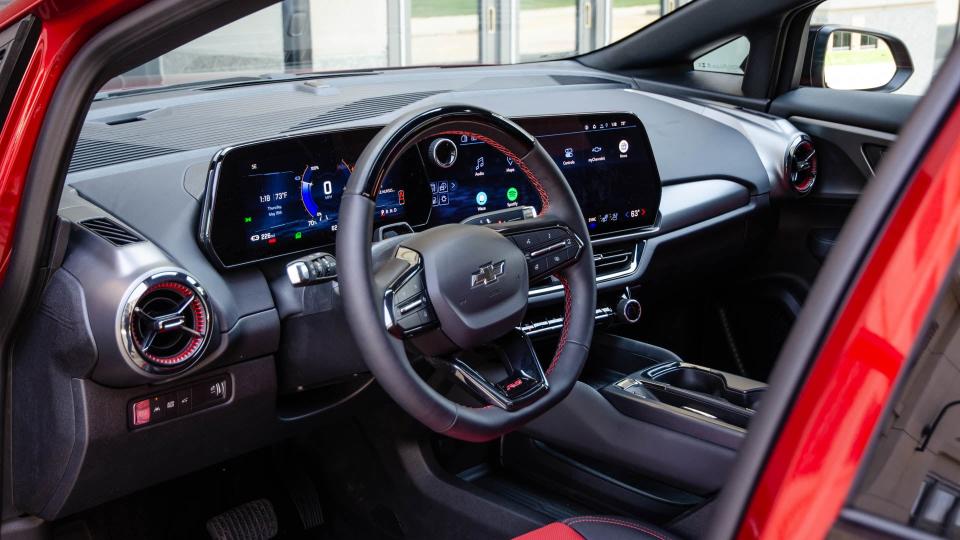
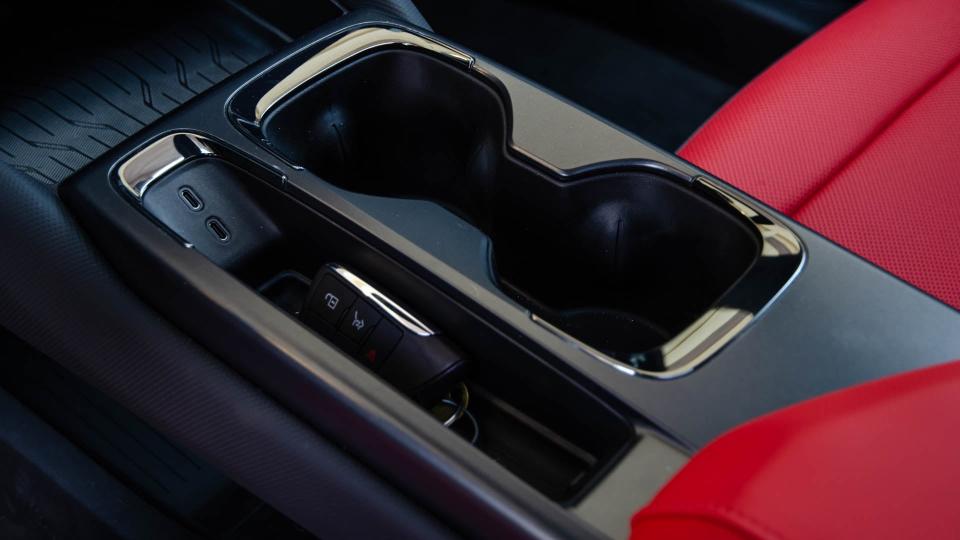
There aren’t too many options, either, with just some dealer accessory stuff to go with the dual-pane power sunroof and Super Cruise. The latter is a $2,700 option likely worth the upgrade for anyone who logs many highway hours.
As good of a daily driver, as the Equinox is, it begins to fall down a bit when you compare it to the other electric crossovers it competes with, namely the Ford Mustang Mach-E and Hyundai Ioniq 5. Both of those competitors are more stylish, both are handily sportier to drive, and the Hyundai has a nicer-looking interior. And they both wear slightly lower starting sticker prices. That’s not to say the Equinox EV can’t hang with those cars, because it really is a great driving crossover for the vast majority of customers, but those two bring more interesting ingredients to their driving recipes.
Range, Charging, and Efficiency
The 85-kWh Ultium battery pack is a single-stack unit, rather than the double-stack batteries in larger Ultium vehicles like the Silverado EV and Hummer EV. That means there’s only one layer of battery modules, which means slower charging since the dual-layer battery packs charge each layer simultaneously. Still, on a capable 150-kW DC fast charger, it can recoup 77 miles in just 10 minutes.
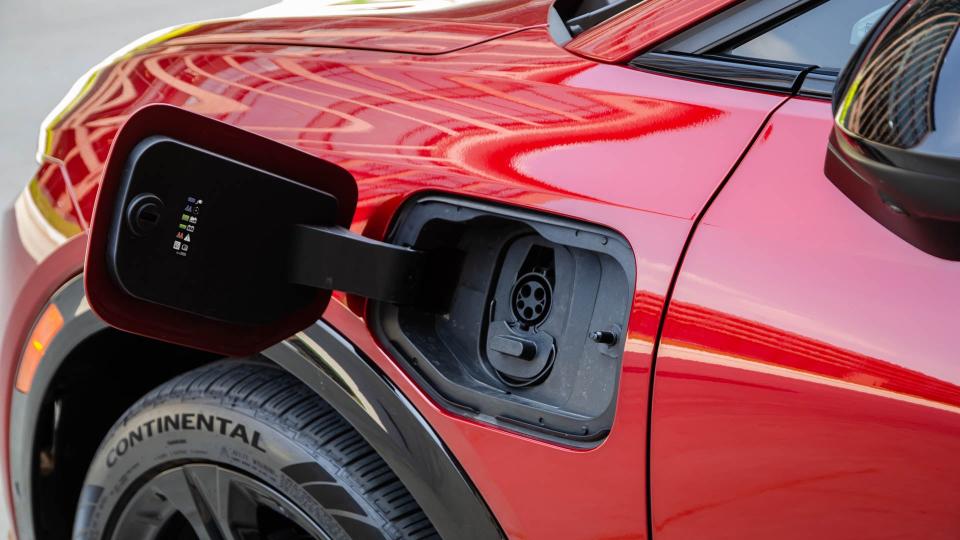
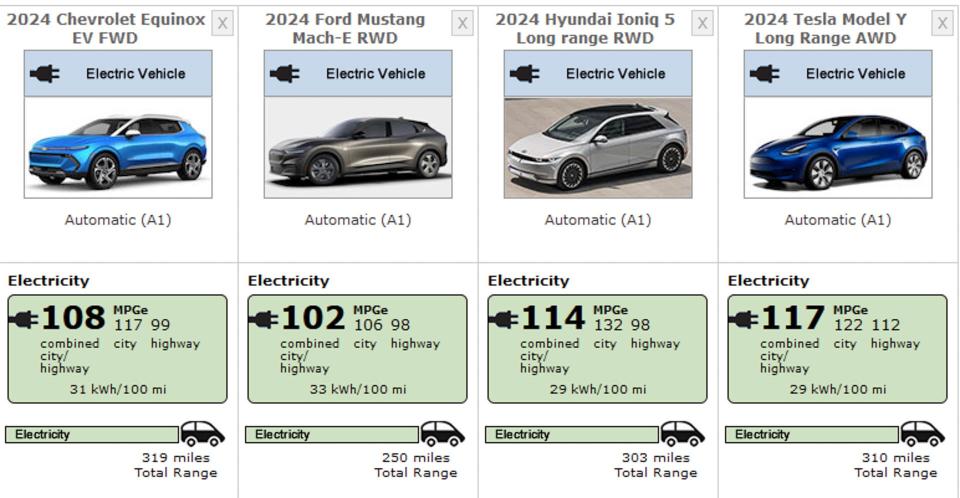
Chevy claims a max range of 319 miles and I totally believe that, as I was averaging 3.4 miles per kWh (which would total 289 miles of range) with a bit of a lead foot. But I saw a peak of 4.3 kWh, and it never dropped under 3 miles per kWh, which would make it among the most efficient EVs I’ve ever tested. And I wasn’t babying it or trying to eke out the most efficiency. I was testing its off-the-line performance, highway passing power, and how well it handled speeds much higher than the average driver will attempt. So a more sensible driver will see even better average efficiency, thus confirming Chevy’s 319-mile range estimate.
Value and Verdict
If you ask me, Chevy priced the Equinox EV right on the money. It isn’t quite cheap enough to act as a Bolt replacement but it’s right there with cars like the aforementioned Mustang Mach-E and Ioniq 5. It’s also around the same price as a Tesla Model 3 and packs a similar range. It might not be as exciting as those other cars—it is very much a normie crossover that just so happens to be electric but a lot of customers want that sort of thing, at least according to Chevy’s data. So for the average crossover buyer, the electric Equinox makes a lot of sense, perhaps even more so than the gas-powered one, as it has better performance, is quieter, and is significantly smoother.
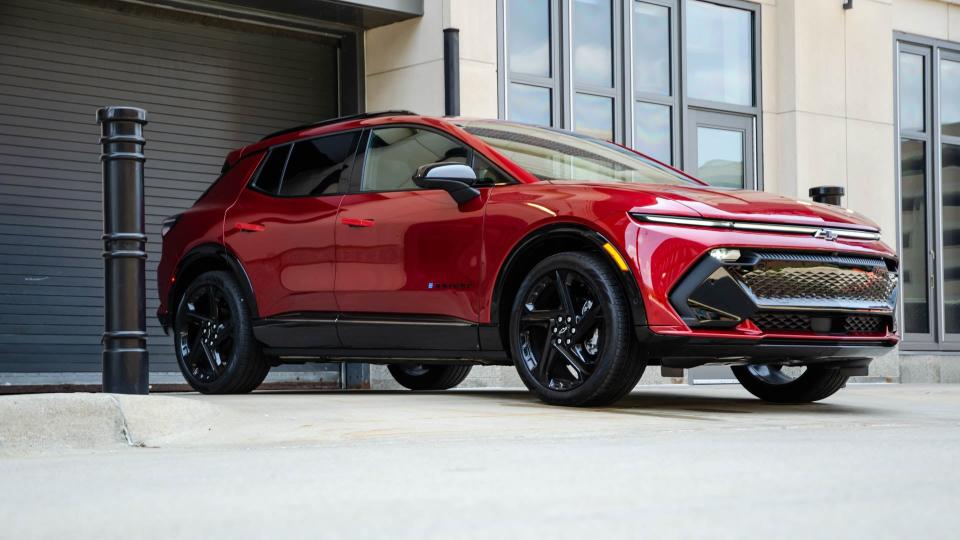
Even if the Equinox EV isn’t particularly exciting, it’s so much better than it needed to be. As Chevy’s new entry-level EV, it could have just been a cheap-feeling electric econobox but it isn’t. It’s a surprisingly good, refreshingly well-rounded crossover that makes the gas-powered version seem silly. It isn’t the most thrilling car in the segment but I can see Chevy selling a boatload of these.
2024 Chevrolet Equinox EV Specs | FWD | AWD |
|---|---|---|
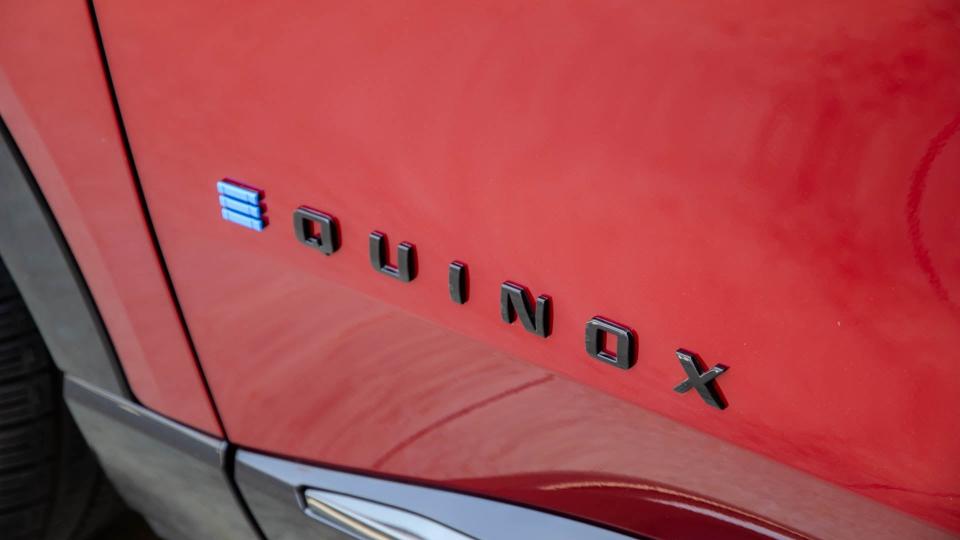

 Yahoo Autos
Yahoo Autos 